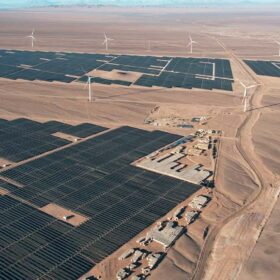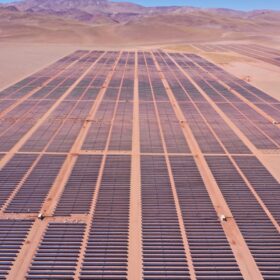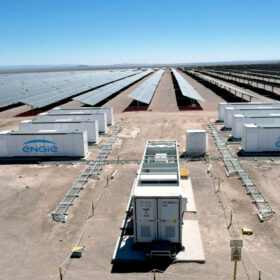Enel Chile begins commercial operation of its largest hybrid project in the country
The PFV Las Salinas stages 1, 2 and 3, which totals 205 MW, will operate jointly with the 112 MW Sierra Gorda Este wind farm and will be the largest industrial-scale hybrid renewable generation center in the country, according to Enel.
Grenergy secures financing for two phases of world’s biggest battery project
Madrid-headquartered independent power producer (IPP) Grenergy has reached financial close on the first two phases of its Oasis de Atacama solar and battery energy storage hybrid project in Chile.
Solar parks provide refuge for birds, claim Chilean researchers
Chilean researchers from Universidad Mayor say that the 10.8 MW La Colonia photovoltaic plant, built by IM2 Solar Chile and Enel Green Power, provides a habitat for birds.
PV installation triggers border dispute between Chile and Argentina
Chilean President Gabriel Boric complained that the solar array installed on a military base in Argentine Patagonia were located three meters inside Chilean territory. “They must remove those solar panels as soon as possible or we are going to do it,” he warned. The Argentine government recognized the error.
Chile, Brazil, Colombia lead hydrogen market in Latin America, Caribbean
Colombia, Brazil, and Chile lead the hydrogen market in Latin America and the Caribbean, according to new data presented by Hinicio and New Energy at the recent 4th Hydrogen Congress for Latin America and the Caribbean (H2LAC 2024).
Colbún proposes 800 MW desalinated water-powered pumped storage project in Chile
Chilean utility Colbún has unveiled plans for a massive pumped storage hydropower project in northern Chile. The facility will use desalinated water from the Pacific Ocean to store energy and use it when it’s most needed.
Large scale battery storage on the rise in Chile
Three utility scale battery energy storage projects co-located with solar plants were announced last week in Chile. Enel is building a 67 MW/134 MWh battery, while CJR Renewable and Uriel Renovables are planning 200 MW/800 MWh and 90 MW/200 MWh projects, respectively.
The Hydrogen Stream: EU hydrogen tender ends with bids below €0.50/kg
The European Commission has selected the winners of European Hydrogen Bank’s first auction, with bids coming in below €0.50 ($0.54)/kg, while Chile and Namibia have revealed new hydrogen plans.
PV and prices, the (not so fast) uptake of solar in Argentina and Chile
The Atacama Desert in Argentina and Chile is the sunniest region on earth. Despite the excellent solar radiation resource availability and plenty of room on rooftops and on the ground, solar PV is not as widespread in either country as would have been expected based on the initial deployment of large-scale PV power plants in both countries some ten years ago.
Engie turns on Latin America’s largest storage battery
Engie has deployed a 139 MW/638 MWh battery in northern Chile. The storage project is connected to the 181.2 MW Coya solar plant in the Antofagasta region.










